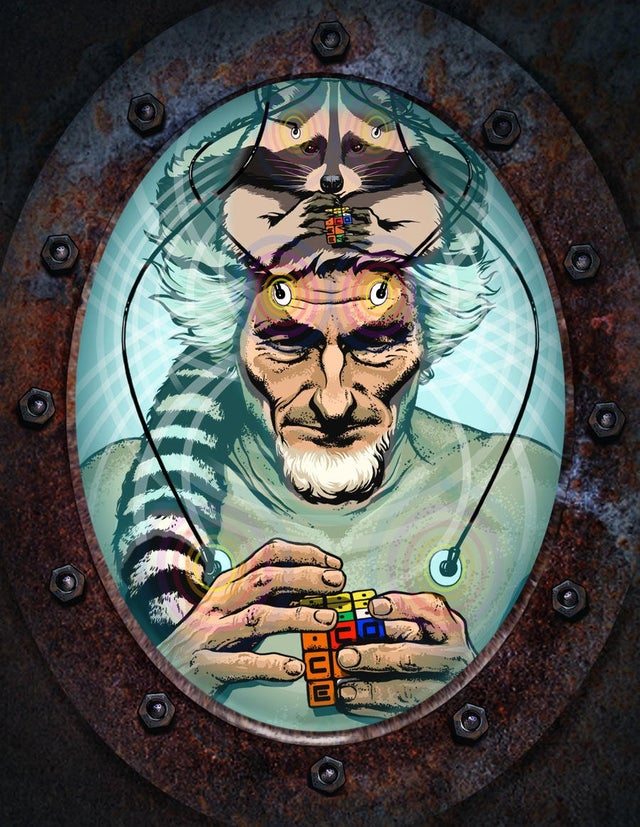We’ve all heard it before: People claiming Linux isn’t a viable alternative cause you can’t run it without using the command line.
I decided to test that. Now there are several distros aimed at new users that have preinstalled GUI tools so you don’t have to touch the Terminal. But I wanted to see if that’s also possible on a distro not specifically aimed at fresh converts. The oldest distro with a large userbase, which a lot of people consider to be a “standard” Linux, is Debian, so default Debian with Gnome is what I’ll use.
I consider “running an OS” to at least include booting it with full disk encryption, starting applications, connecting to a network, browsing the web, file management, installing updates and new software (both from the repos and third party sources), installing necessary drivers, setting up printing and scanning, and adjusting the looks and behaviour of the user interface.
So generally anything you’d be able to do on Windows without opening Powershell, CMD, Regedit or a text editor.
I guess I’m telling you nothing new when I say that you can install, boot, launch apps and browse the web on Debian without the command line.
It comes with a pre-installed software center, printer and scanner setup works out of the box from Gnome’s settings.
Here’s where it gets a little trickier: Scrolling on Firefox is rough, cause the preinstalled old version doesn’t have Wayland support enabled. So you either have to enable Wayland support or install the Flatpak version of Firefox.
To enable Wayland, you have to write MOZ_ENABLE_WAYLAND=1 into /etc/environment. But the file manager doesn’t let you edit system files without starting it as root from the command line. To add an “edit as admin” entry to the context menu in Nautilus, you need the nautilus-admin package which isn’t available in the software center. It can be installed with Synaptic, a pre-installed GUI frontend for apt. But you still need to edit a system text file, which goes against the spirit of this challenge.
The other option requires enabling Flatpak for the Software Center. You can do that by installing gnome-software-plugin-flatpak using synaptic, then heading over to https://flathub.org/setup/Debian to download the flathub repo file which can be installed with a double-click and a reboot.
Note: Beginner-friendly distros ship with a newer Firefox version and Flatpak support out of the box.
To install any compatible binary on your system (like the Universal Android Debloater, for example), just copy it to any place you like. Install the menu editor alacarte and use it to add a menu entry for the file. Now you can launch it from within Gnome by clicking on its icon or using the global search.
Another issue is that during the boot process, you’re already presented with the command line running boot messages by you, and the password prompt for the disk decryption is also on the command line. Also, the 5 second Grub countdown is kind of annoying. To make this prettier, we need to install grub-customizer, launch it, set the grub countdown to 0 and add the word splash at the end of your kernel parameters in the settings. This activates the “boot-prettifier” plymouth which is pre-installed but not activated by default. Again, pushing the boundaries of this challenge.
Note: Beginner-friendly distros come with pretty plymouth boot enabled by default.
To enable the non-free nvidia Driver, you need to enable non-free software during the GUI installation or in the Software Center settings, then install nvidia-driver from Synaptic, and reboot.
Note: Beginner-friendly distros come with a one-click NVidia driver install
To install Steam from the Debian repos, you’d need to enable Multi-Arch first, which isn’t possible without the command line. Using the Flatpak version is your other option.
Note: Some beginner-friendly distros handle this for you as soon as you install a package that depends on multi-arch
tl/dr: It’s possible to run and administer Debian for standard tasks without touching the command line. It’s just generally faster to use the terminal if you know what you’re doing.
Distros like Ubuntu, Mint, Zorin or Pop!_OS (possibly also Manjaro which I have no experience with) remove the remaining roadblocks. The only time you’ll always need the command line is to fix issues you have with help from other users, because it’s much, much easier to just post the right terminal commands online than to guide you through whichever GUI you might be using.
Anyone who’s ever followed a Windows troubleshooting guide knows what I’m talking about.
Its not possible to use windows to its fullest without the command line. You can muddle along and miss out without it but you will always hit a point where the cli is the best way forward.
Yes, but no…
For a basic user, who does not expect to be doing anything special beyond opening existing programs, or using programs downloaded from the package-manager its possible to never touch terminal.
I have two kids who daily drive Manjaro based light gaming PC’s, they never touch the terminal, but they also dont administer their systems, I do.
I do use the terminal, frequently for updates, and some specialized tasks like minecraft mods which require unpacking files and sometimes fixing permissions.
So my TLDR, is that its possible to be a USER without touching the terminal, but I dont think its possible to be an administrator without.
You can update the system with the Software Center and unpack archives and adjust permissions from within Nautilus.
or, I can SSH from my computer in a different room, and do it with one CMD in terminal :)
Yes, it’s faster with the Terminal, but you said that it’s impossible without one, which just isn’t true.
o sure, I could walk over and put in my admin password and do it all in the GUI. I cant think of any basic things that require terminal with modern DE’s like KDE. I just use terminal for remote management because its simpler than trying to work at their desks.
I think that the same principle applied to Windows/Mac, doing any administrator work without terminal seems impractical or impossible.
I feel like Mint is the move if you never want to utilize the terminal. But while it can be intimidating initially, after using it, you’ll grow to love it. Truly makes life way easier. I learned by first finding threads on my issues to copy and paste commands. After doing that enough you’ll gain an understanding of the main commands pretty quick. Fedora is a great starter in my mind, as you can do everything through the GUI when first starting, but unlike Mint, you can still get nerdy with the terminal when you feel up to it. Using a VM is a solid option to learn the terminal without any risk, worst case just delete the VM and make another. But you’d have to mess up pretty thoroughly to need to do that in my experience. Fedora, or Nobara which is a gaming and media centric fork of Fedora, are amazing due to the ability to run great out of the box plus being able to dial in anything you want to alter for your needs down the road. Fedora’s Software center allows you to add flatpak and snap packages, so it’ll all be in one place. Fedora 40 makes NVIDIA drivers pretty easy to deal with too. But this is just my two cents, I’m curious to see what others recommend for you.
I don’t think you really do anymore. I’d consider myself an experienced Linux user. I’ve been using it as a my desktop OS for over 20 years. I’ve also used Linux heavily through my career and am completely comfortable with the command line.
With recent installs of Fedora the only thing I use the command line for is the initial setup of the multimedia codecs. After that I haven’t been required to touch it.
I used to consider a terminal required to keep your desktop Linux system running. Now I look at is as an optional install for programmers.
I paid for a keyboard, I’m going to use a keyboard!
Every key, too! I may not know what the heck SysReq is, but I’m hitting it!
Removed by mod
Is it possible to do work in a shed without using a drill?
It is good of you to do this work and post your findings, so no offense intended, but this command line meme is better off not being spread. The terminal is a tool and should be used when it’s needed and when is best. Time spent worrying about this is time that could be spent making it easier to understand.
I was introduced to the terminal by a friend so I don’t know of a good starting tutorial for newbies. I wasn’t interested until I saw you could use the output of one command as the input of another command using a “pipe” |
Debian is great for servers, not for desktop novices. Use a state of the art desktop OS like fedora (atomic) and you won’t face a lot of those issues.
Yes, linux “has a problem” with nvidia but we should blame nvidia, not linux.
I’m not reading all that. The answer is no.
Many times you need to use the terminal with Win and Mac too. Sometimes something goes wrong, or you need to enable something that doesn’t have a UI. So in the last few years, I’ve used the terminal with these OSes too. So I don’t see why you wouldn’t use the terminal with Linux too.
The only time you wouldn’t use the terminal at all, is if someone else is your sysadmin, and you’re just driving a browser or a couple of apps, as a plain user. Then sure, you’ll never need to touch the terminal. My mom only uses a browser for example on her linux laptop. It’s good enough for her. But when there’s an update or anything else such, I’m the one dealing with it.
Yes, entirely possible. I’ve been using Linux off and on since 2006 and full time as my daily driver since 2018ish. I’ve used Ubuntu, Fedora, Open Suse, Endevour OS, Manjaro and various combos of those in that time. I barely use CLI, bar distro updates and a few basics. The fact that you need to use the CLI is a complete myth. I see a lot of responses stating “yeah, but why would you want to?” . That, frankly, is gatekeeping. I fully respect those who choose to use the CLI as a powerful too, I fully understand their position. But if someone chooses not to, because they aren’t as used to it or just prefer to us a mouse to click around then yes it is possible, and they should be encouraged to run a Linux distro if they want to.
If I had read many of the responses below, back in 2006, I may not have tried Ubuntu when I did and may not be still using Linux to this day.
Is it possible to use Linux without the command line? …Nvidia…
Yeah, with Nvidia you’re going to have a bad time never using CLI since their driver can ball kick you to TTY when GDM or SSDM takes a shit from Nvidia linker fuckups.
Yes.
Why would you? The command line is the natural way of interacting with a computer. GUIs are just for convenience. What you’re asking is like „can there be a city where the public transport is so good that I never have to walk“.
And that’s a fact for every operating system, not only Linux.
The command line is the natural way of interacting with a computer.
N-natural?
Plus there are many, many, many, many use cases for a computer. Even the ones you don’t even think about, like bird sighting.
Yeah my daily driver for awhile has been Debian stable. All the normal day to day tasks can very easily be accomplished with only gui tools. My CLI stuff is more or less limited to ssh access to other machines and some light docker tinkering.







